Deck 3: The Enhanced E-R Model
Question
Question
Question
Question
Question
Question
Question
Question
Question
Question
Question
Question
Question
Question
Question
Question
Question
Question
Question
Question
Question
Question
Question
Question
Question
Question
Question
Question
Question
Question
Question
Question
Question
Question
Question
Question
Question
Question
Question
Question
Question
Question
Question
Question
Question
Question
Question
Question
Question
Question
Question
Question
Question
Question
Question
Question
Question
Question
Question
Question
Question
Question
Question
Question
Question
Question
Question
Question
Question
Question
Question
Question
Question
Question
Question
Question
Question
Question
Question
Question

Unlock Deck
Sign up to unlock the cards in this deck!
Unlock Deck
Unlock Deck
1/102
Play
Full screen (f)
Deck 3: The Enhanced E-R Model
1
In the figure below, a student: 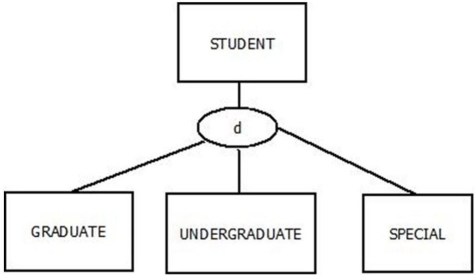
A) must be a graduate student, an undergraduate, a special student or some other type of student.
B) must be a graduate student or an undergraduate student.
C) must be at least a special student.
D) must be a doctoral student.

A) must be a graduate student, an undergraduate, a special student or some other type of student.
B) must be a graduate student or an undergraduate student.
C) must be at least a special student.
D) must be a doctoral student.
A
2
The process of defining one or more subtypes of a supertype and forming relationships is called:
A) specialization.
B) generalization.
C) creating discord.
D) selecting classes.
A) specialization.
B) generalization.
C) creating discord.
D) selecting classes.
A
3
In the figure below, which of the following apply to both OUTPATIENTs and RESIDENT_PATIENTs? 
A) Checkback_Date
B) Date_Discharged
C) Patient_Name
D) XML

A) Checkback_Date
B) Date_Discharged
C) Patient_Name
D) XML
C
4
In the figure below, which of the following is a subtype of patient? 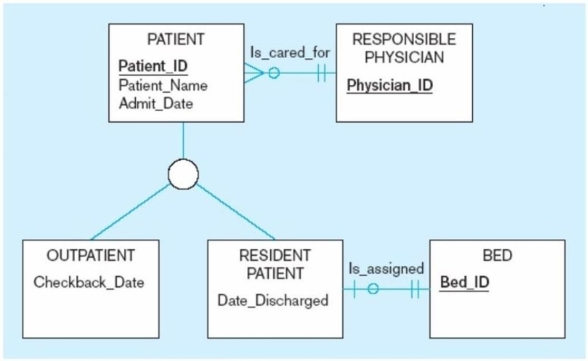
A) Outpatient
B) Physician
C) Bed
D) Date_Hired

A) Outpatient
B) Physician
C) Bed
D) Date_Hired

Unlock Deck
Unlock for access to all 102 flashcards in this deck.
Unlock Deck
k this deck
5
Given the following entities, which of the choices below would be the most complicated? Automobile: VIN, EngineSize, NumberOfDoors, NumberOfPassengers, FuelType, Transmission
SUV: VIN, EngineSize, NumberOfPassengers, NoWheelDrive, FuelType, Transmission
Truck: VIN, EngineSize, NoWheelDrive, FuelType, Transmission, Payload
A) Define one vehicle entity type to hold all entities.
B) Define a separate entity type for each entity.
C) Define a supertype called vehicle and make each of the entities subtypes.
D) Keep only the Truck entity type.
SUV: VIN, EngineSize, NumberOfPassengers, NoWheelDrive, FuelType, Transmission
Truck: VIN, EngineSize, NoWheelDrive, FuelType, Transmission, Payload
A) Define one vehicle entity type to hold all entities.
B) Define a separate entity type for each entity.
C) Define a supertype called vehicle and make each of the entities subtypes.
D) Keep only the Truck entity type.

Unlock Deck
Unlock for access to all 102 flashcards in this deck.
Unlock Deck
k this deck
6
Which of the following is a generic entity type that has a relationship with one or more subtypes?
A) Megatype
B) Supertype
C) Subgroup
D) Class
A) Megatype
B) Supertype
C) Subgroup
D) Class

Unlock Deck
Unlock for access to all 102 flashcards in this deck.
Unlock Deck
k this deck
7
The process of defining a more general entity type from a set of more specialized entity types is called:
A) generalization.
B) specialization.
C) normalization.
D) extrapolation.
A) generalization.
B) specialization.
C) normalization.
D) extrapolation.

Unlock Deck
Unlock for access to all 102 flashcards in this deck.
Unlock Deck
k this deck
8
A(n) ________ constraint is a type of constraint that addresses whether an instance of a supertype must also be an instance of at least one subtype.
A) disjoint
B) overlap
C) completeness
D) weak
A) disjoint
B) overlap
C) completeness
D) weak

Unlock Deck
Unlock for access to all 102 flashcards in this deck.
Unlock Deck
k this deck
9
The property by which subtype entities possess the values of all attributes of a supertype is called:
A) hierarchy reception.
B) class management.
C) multiple inheritance.
D) attribute inheritance.
A) hierarchy reception.
B) class management.
C) multiple inheritance.
D) attribute inheritance.

Unlock Deck
Unlock for access to all 102 flashcards in this deck.
Unlock Deck
k this deck
10
The following figure is an example of: 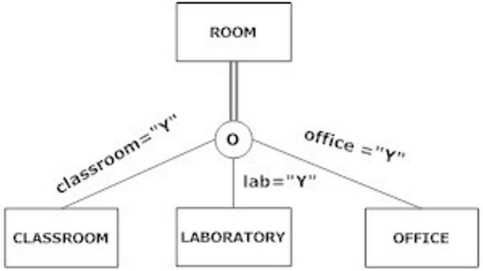
A) partial specialization.
B) completeness.
C) total specialization.
D) disjointness.

A) partial specialization.
B) completeness.
C) total specialization.
D) disjointness.

Unlock Deck
Unlock for access to all 102 flashcards in this deck.
Unlock Deck
k this deck
11
The ________ rule states that an entity instance can simultaneously be a member of two (or more) subtypes.
A) disjoint
B) overlap
C) partial specialization
D) total specialization
A) disjoint
B) overlap
C) partial specialization
D) total specialization

Unlock Deck
Unlock for access to all 102 flashcards in this deck.
Unlock Deck
k this deck
12
An attribute of the supertype that determines the target subtype(s) is called the:
A) determinant.
B) subtype decision.
C) disjoint indicator.
D) subtype discriminator.
A) determinant.
B) subtype decision.
C) disjoint indicator.
D) subtype discriminator.

Unlock Deck
Unlock for access to all 102 flashcards in this deck.
Unlock Deck
k this deck
13
A ________ addresses whether an instance of a supertype may simultaneously be a member of two or more subtypes.
A) disjointness constraint
B) disjoint rule
C) partial specialization
D) total specialization
A) disjointness constraint
B) disjoint rule
C) partial specialization
D) total specialization

Unlock Deck
Unlock for access to all 102 flashcards in this deck.
Unlock Deck
k this deck
14
The ________ rule specifies that an entity instance of a supertype is allowed not to belong to any subtype.
A) semi-specialization
B) total specialization
C) partial specialization
D) disjointness
A) semi-specialization
B) total specialization
C) partial specialization
D) disjointness

Unlock Deck
Unlock for access to all 102 flashcards in this deck.
Unlock Deck
k this deck
15
The ________ rule specifies that each entity instance of the supertype must be a member of some subtype in the relationship.
A) semi-specialization
B) total specialization
C) partial specialization
D) total convergence
A) semi-specialization
B) total specialization
C) partial specialization
D) total convergence

Unlock Deck
Unlock for access to all 102 flashcards in this deck.
Unlock Deck
k this deck
16
Which of the following is a completeness constraint?
A) Total specialization
B) Partial generalization
C) Total recall
D) Partial hybridization
A) Total specialization
B) Partial generalization
C) Total recall
D) Partial hybridization

Unlock Deck
Unlock for access to all 102 flashcards in this deck.
Unlock Deck
k this deck
17
In the figure below, to which of the following entities are the entities "CAR" and "TRUCK" generalized? 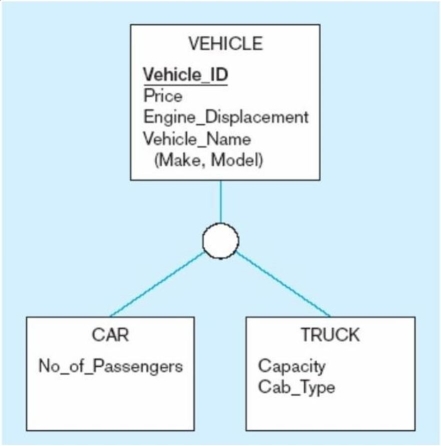
A) Make
B) Vehicle
C) Model
D) Price

A) Make
B) Vehicle
C) Model
D) Price

Unlock Deck
Unlock for access to all 102 flashcards in this deck.
Unlock Deck
k this deck
18
The ________ rule specifies that an entity can be a member of only one subtype at a time.
A) exclusion
B) disjoint
C) removal
D) inclusion
A) exclusion
B) disjoint
C) removal
D) inclusion

Unlock Deck
Unlock for access to all 102 flashcards in this deck.
Unlock Deck
k this deck
19
Subtypes should be used when:
A) there are attributes that apply to some but not all instances of an entity type.
B) supertypes relate to objects outside the business.
C) the instances of a subtype do not participate in a relationship that is unique to that subtype.
D) a recursive relationship is needed.
A) there are attributes that apply to some but not all instances of an entity type.
B) supertypes relate to objects outside the business.
C) the instances of a subtype do not participate in a relationship that is unique to that subtype.
D) a recursive relationship is needed.

Unlock Deck
Unlock for access to all 102 flashcards in this deck.
Unlock Deck
k this deck
20
In the figure below, the patient must be either an outpatient or a resident patient. This is an example of the ________ rule. 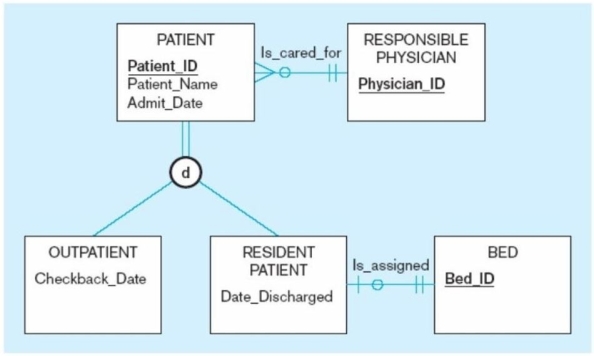
A) disjoint
B) specialization
C) generalization
D) overlap

A) disjoint
B) specialization
C) generalization
D) overlap

Unlock Deck
Unlock for access to all 102 flashcards in this deck.
Unlock Deck
k this deck
21
The subtype discriminator in the figure below is: 
A) Part_Type.
B) Part_No.
C) Manufactured Part.
D) Location.

A) Part_Type.
B) Part_No.
C) Manufactured Part.
D) Location.

Unlock Deck
Unlock for access to all 102 flashcards in this deck.
Unlock Deck
k this deck
22
The figure below is an example of a(n): 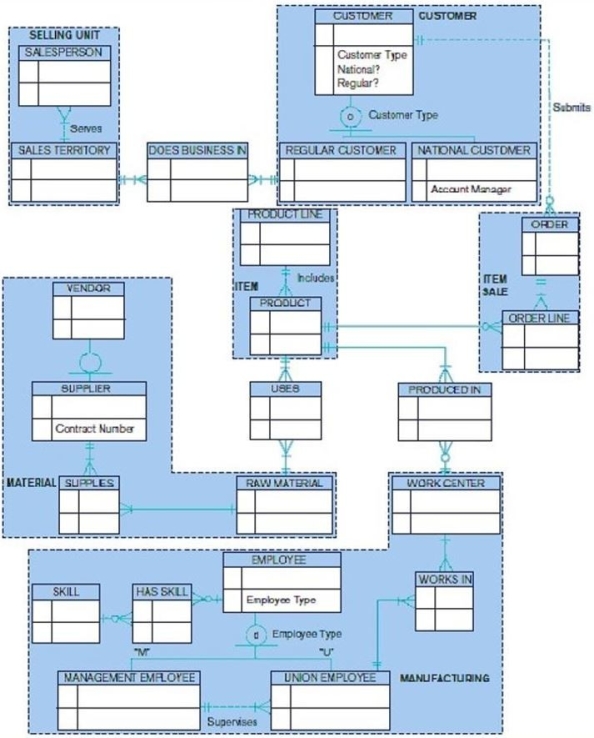
A) supertype/subtype hierarchy.
B) hierarchical data model.
C) entity cluster.
D) column cluster.

A) supertype/subtype hierarchy.
B) hierarchical data model.
C) entity cluster.
D) column cluster.

Unlock Deck
Unlock for access to all 102 flashcards in this deck.
Unlock Deck
k this deck
23
Packaged data models:
A) are ready to use right out of the box.
B) require customization.
C) allow partial specialization.
D) cannot be used for most applications.
A) are ready to use right out of the box.
B) require customization.
C) allow partial specialization.
D) cannot be used for most applications.

Unlock Deck
Unlock for access to all 102 flashcards in this deck.
Unlock Deck
k this deck
24
All of the following are advantages of packaged data models EXCEPT:
A) packaged data models can be built using proven components evolved from cumulative experiences.
B) projects take less time and cost less.
C) the data model is easier to evolve.
D) more one-to-one relationships give the data model more flexibility.
A) packaged data models can be built using proven components evolved from cumulative experiences.
B) projects take less time and cost less.
C) the data model is easier to evolve.
D) more one-to-one relationships give the data model more flexibility.

Unlock Deck
Unlock for access to all 102 flashcards in this deck.
Unlock Deck
k this deck
25
Using a packaged data model, projects take less time and cost because:
A) less personnel are required.
B) essential components and structures are already defined.
C) there is more time taken to model the enterprise.
D) packaged data models only run in Oracle.
A) less personnel are required.
B) essential components and structures are already defined.
C) there is more time taken to model the enterprise.
D) packaged data models only run in Oracle.

Unlock Deck
Unlock for access to all 102 flashcards in this deck.
Unlock Deck
k this deck
26
In a supertype/subtype hierarchy, subtypes that are lower in the hierarchy inherit attributes from not only their immediate supertype but from all ________ in the hierarchy.
A) subtypes
B) supertypes
C) constraints
D) dimensions
A) subtypes
B) supertypes
C) constraints
D) dimensions

Unlock Deck
Unlock for access to all 102 flashcards in this deck.
Unlock Deck
k this deck
27
The subtype discriminator is a composite attribute when there is a(n):
A) overlap rule.
B) disjoint rule.
C) partial specialization.
D) full specialization.
A) overlap rule.
B) disjoint rule.
C) partial specialization.
D) full specialization.

Unlock Deck
Unlock for access to all 102 flashcards in this deck.
Unlock Deck
k this deck
28
In a supertype/subtype hierarchy, each subtype has:
A) only one supertype.
B) many supertypes.
C) at most two supertypes.
D) at least one subtype.
A) only one supertype.
B) many supertypes.
C) at most two supertypes.
D) at least one subtype.

Unlock Deck
Unlock for access to all 102 flashcards in this deck.
Unlock Deck
k this deck
29
Which of the following statements is true about the figure shown below? 
A) A rental unit must be either an apartment or a house, and cannot be both at the same time.
B) A rental unit can be an apartment, house or just a rental unit; it may not be more than one at the same time.
C) A rental unit must be either an apartment or a house, and could be both.
D) A rental unit can be an apartment, a house or just a rental unit. It could be both an apartment and a house at the same time.

A) A rental unit must be either an apartment or a house, and cannot be both at the same time.
B) A rental unit can be an apartment, house or just a rental unit; it may not be more than one at the same time.
C) A rental unit must be either an apartment or a house, and could be both.
D) A rental unit can be an apartment, a house or just a rental unit. It could be both an apartment and a house at the same time.

Unlock Deck
Unlock for access to all 102 flashcards in this deck.
Unlock Deck
k this deck
30
A generic or template data model that can be reused as a starting point for a data modeling project is called a(n):
A) packaged data model.
B) universal data model.
C) enterprise data model.
D) collection data model.
A) packaged data model.
B) universal data model.
C) enterprise data model.
D) collection data model.

Unlock Deck
Unlock for access to all 102 flashcards in this deck.
Unlock Deck
k this deck
31
The following figure shows a: 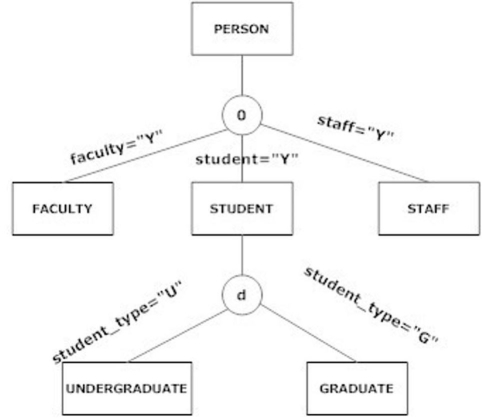
A) disjoint constraint.
B) completeness constraint.
C) supertype/subtype hierarchy.
D) spindle constraint.

A) disjoint constraint.
B) completeness constraint.
C) supertype/subtype hierarchy.
D) spindle constraint.

Unlock Deck
Unlock for access to all 102 flashcards in this deck.
Unlock Deck
k this deck
32
Which of the following is true of packaged data models?
A) Relationships are connected to the highest-level entity type in an order that makes sense.
B) All subtype/supertype relationships follow the total specialization and disjoint rules.
C) No entities on the many sides of a relationship can be weak.
D) All weak entities are considered strong.
A) Relationships are connected to the highest-level entity type in an order that makes sense.
B) All subtype/supertype relationships follow the total specialization and disjoint rules.
C) No entities on the many sides of a relationship can be weak.
D) All weak entities are considered strong.

Unlock Deck
Unlock for access to all 102 flashcards in this deck.
Unlock Deck
k this deck
33
Which statement is true about the following diagram? 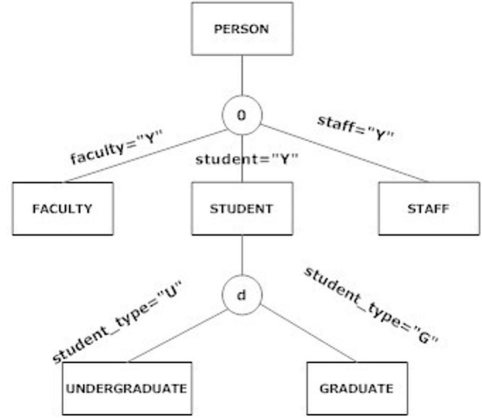
A) A person can only be a faculty, student, or staff.
B) A student can be both an undergraduate and a graduate student at the same time.
C) All attributes of person and student are inherited by undergraduate.
D) All attributes of graduate are inherited by person.

A) A person can only be a faculty, student, or staff.
B) A student can be both an undergraduate and a graduate student at the same time.
C) All attributes of person and student are inherited by undergraduate.
D) All attributes of graduate are inherited by person.

Unlock Deck
Unlock for access to all 102 flashcards in this deck.
Unlock Deck
k this deck
34
Which of the following statements is true about the figure shown below? 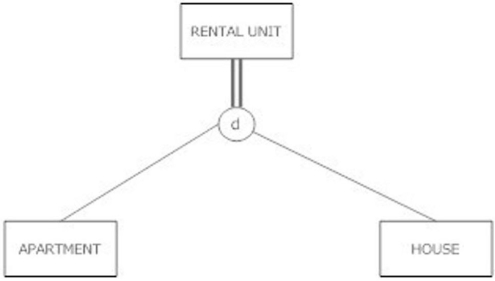
A) A rental unit must be either an apartment or a house, and cannot be both at the same time.
B) A rental unit can be an apartment, house or just a rental unit; it may not be more than one at the same time.
C) A rental unit must be either an apartment or a house, and could be both.
D) A rental unit can be an apartment, a house or just a rental unit. It could be both an apartment and a house at the same time.

A) A rental unit must be either an apartment or a house, and cannot be both at the same time.
B) A rental unit can be an apartment, house or just a rental unit; it may not be more than one at the same time.
C) A rental unit must be either an apartment or a house, and could be both.
D) A rental unit can be an apartment, a house or just a rental unit. It could be both an apartment and a house at the same time.

Unlock Deck
Unlock for access to all 102 flashcards in this deck.
Unlock Deck
k this deck
35
The following diagram shows: 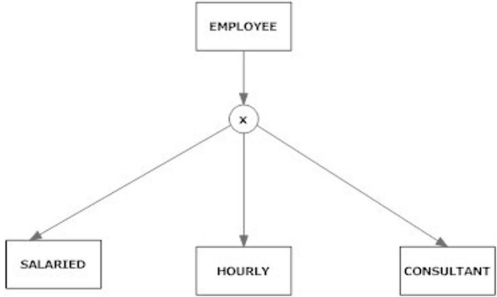
A) total specialization.
B) partial specialization.
C) the overlap rule.
D) subtype discriminator.

A) total specialization.
B) partial specialization.
C) the overlap rule.
D) subtype discriminator.

Unlock Deck
Unlock for access to all 102 flashcards in this deck.
Unlock Deck
k this deck
36
An entity cluster is:
A) a formal method for specifying attributes of related entities.
B) a set of one or more entity types and associated relationships grouped into a single abstract entity type.
C) a useful way to present data for a small and fairly simple organization.
D) a way of developing more granular views of the data model.
A) a formal method for specifying attributes of related entities.
B) a set of one or more entity types and associated relationships grouped into a single abstract entity type.
C) a useful way to present data for a small and fairly simple organization.
D) a way of developing more granular views of the data model.

Unlock Deck
Unlock for access to all 102 flashcards in this deck.
Unlock Deck
k this deck
37
Which of the following statements is true about the figure shown below? 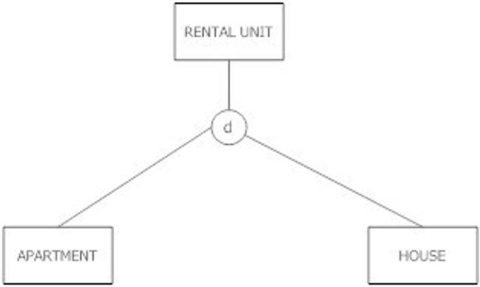
A) A rental unit must be either an apartment or a house, and cannot be both at the same time.
B) A rental unit can be an apartment, house or just a rental unit; it may not be more than one at the same time.
C) A rental unit must be either an apartment or a house, and could be both.
D) A rental unit can be an apartment, a house or just a rental unit. It could be both an apartment and a house at the same time.

A) A rental unit must be either an apartment or a house, and cannot be both at the same time.
B) A rental unit can be an apartment, house or just a rental unit; it may not be more than one at the same time.
C) A rental unit must be either an apartment or a house, and could be both.
D) A rental unit can be an apartment, a house or just a rental unit. It could be both an apartment and a house at the same time.

Unlock Deck
Unlock for access to all 102 flashcards in this deck.
Unlock Deck
k this deck
38
The following figure shows an example of: 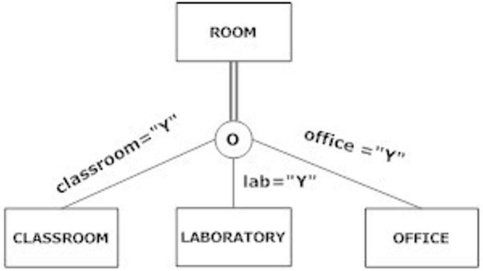
A) the disjoint rule.
B) the completeness rule.
C) the underdog rule.
D) the overlap rule.

A) the disjoint rule.
B) the completeness rule.
C) the underdog rule.
D) the overlap rule.

Unlock Deck
Unlock for access to all 102 flashcards in this deck.
Unlock Deck
k this deck
39
An entity cluster can be formed by:
A) deleting a supertype and its subtype.
B) combining metadata.
C) combining a strong entity and its weak entities.
D) deleting metadata.
A) deleting a supertype and its subtype.
B) combining metadata.
C) combining a strong entity and its weak entities.
D) deleting metadata.

Unlock Deck
Unlock for access to all 102 flashcards in this deck.
Unlock Deck
k this deck
40
Which of the following statements is true about the figure shown below? 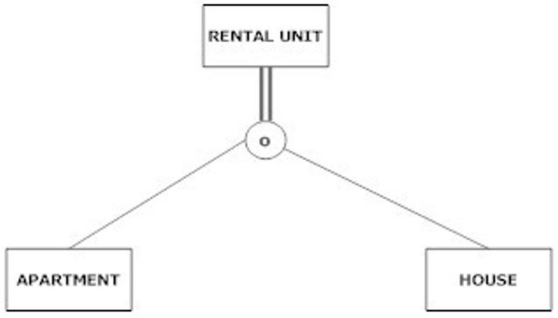
A) A rental unit must be either an apartment or a house, and cannot be both at the same time.
B) A rental unit can be an apartment, house or just a rental unit; it may not be more than one at the same time.
C) A rental unit must be either an apartment or a house, and could be both.
D) A rental unit can be an apartment, a house or just a rental unit. It could be both an apartment and a house at the same time.

A) A rental unit must be either an apartment or a house, and cannot be both at the same time.
B) A rental unit can be an apartment, house or just a rental unit; it may not be more than one at the same time.
C) A rental unit must be either an apartment or a house, and could be both.
D) A rental unit can be an apartment, a house or just a rental unit. It could be both an apartment and a house at the same time.

Unlock Deck
Unlock for access to all 102 flashcards in this deck.
Unlock Deck
k this deck
41
The third step in the data modeling process with a packaged data model is:
A) rename identified data elements.
B) rename relationships.
C) map data to be used from package to data in current databases.
D) interview users.
A) rename identified data elements.
B) rename relationships.
C) map data to be used from package to data in current databases.
D) interview users.

Unlock Deck
Unlock for access to all 102 flashcards in this deck.
Unlock Deck
k this deck
42
Specialization is the reverse of generalization.

Unlock Deck
Unlock for access to all 102 flashcards in this deck.
Unlock Deck
k this deck
43
The following figure is an example of total specialization. 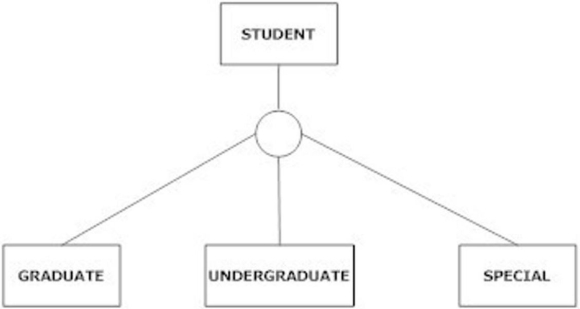


Unlock Deck
Unlock for access to all 102 flashcards in this deck.
Unlock Deck
k this deck
44
A subtype is a generic entity that has a relationship with one or more entities at a lower level.

Unlock Deck
Unlock for access to all 102 flashcards in this deck.
Unlock Deck
k this deck
45
Supertype/subtype relationships should not be used when the instances of a subtype participate in no relationships which are unique to that subtype.

Unlock Deck
Unlock for access to all 102 flashcards in this deck.
Unlock Deck
k this deck
46
All of the following are steps to using a packaged data model EXCEPT:
A) identify the parts of the data model that apply to your data modeling situation.
B) utilize all business rules that come with the packaged data model.
C) rename the identified data elements.
D) map data to be used in packages with existing data in the current databases.
A) identify the parts of the data model that apply to your data modeling situation.
B) utilize all business rules that come with the packaged data model.
C) rename the identified data elements.
D) map data to be used in packages with existing data in the current databases.

Unlock Deck
Unlock for access to all 102 flashcards in this deck.
Unlock Deck
k this deck
47
The overlap rule specifies that if an entity instance of the supertype is a member of one subtype, it can simultaneously be a member of two (or more) subtypes.

Unlock Deck
Unlock for access to all 102 flashcards in this deck.
Unlock Deck
k this deck
48
When the total specialization rule is set for a supertype/subtype relationship, one could roughly compare the supertype to an abstract class in object-oriented programming.

Unlock Deck
Unlock for access to all 102 flashcards in this deck.
Unlock Deck
k this deck
49
Generalization is a top-down process.

Unlock Deck
Unlock for access to all 102 flashcards in this deck.
Unlock Deck
k this deck
50
A member of a subtype does NOT necessarily have to be a member of the supertype.

Unlock Deck
Unlock for access to all 102 flashcards in this deck.
Unlock Deck
k this deck
51
When identifying the parts of the packaged data model that apply to your organization, one should first start with:
A) entities.
B) attributes.
C) primary keys.
D) relationships.
A) entities.
B) attributes.
C) primary keys.
D) relationships.

Unlock Deck
Unlock for access to all 102 flashcards in this deck.
Unlock Deck
k this deck
52
One of the major challenges in data modeling is to recognize and clearly represent entities that are almost the same.

Unlock Deck
Unlock for access to all 102 flashcards in this deck.
Unlock Deck
k this deck
53
An entity instance of a subtype represents the same entity instance of the supertype.

Unlock Deck
Unlock for access to all 102 flashcards in this deck.
Unlock Deck
k this deck
54
A completeness constraint may specify that each entity of the supertype must be a member of some subtype in the relationship.

Unlock Deck
Unlock for access to all 102 flashcards in this deck.
Unlock Deck
k this deck
55
The total specialization rule states that an entity instance of a supertype is allowed not to belong to any subtype.

Unlock Deck
Unlock for access to all 102 flashcards in this deck.
Unlock Deck
k this deck
56
The most important challenge of customizing a purchased data model is:
A) getting user buy-in.
B) determining the business rules that will be established through the data model.
C) implementation.
D) user training.
A) getting user buy-in.
B) determining the business rules that will be established through the data model.
C) implementation.
D) user training.

Unlock Deck
Unlock for access to all 102 flashcards in this deck.
Unlock Deck
k this deck
57
In packaged data models, strong entities always have ________ between them.
A) weak entities
B) 1:1 relationships
C) 1:M relationships
D) M:N relationships
A) weak entities
B) 1:1 relationships
C) 1:M relationships
D) M:N relationships

Unlock Deck
Unlock for access to all 102 flashcards in this deck.
Unlock Deck
k this deck
58
A good method for identifying inconsistencies and finding hidden meaning in the customized purchased data model is:
A) data analysis.
B) data volume usage analysis.
C) user interviews.
D) data profiling.
A) data analysis.
B) data volume usage analysis.
C) user interviews.
D) data profiling.

Unlock Deck
Unlock for access to all 102 flashcards in this deck.
Unlock Deck
k this deck
59
In packaged data models, all subtype/supertype relationships follow the ________ and ________ rules.
A) partial specialization; disjoint
B) total specialization; disjoint
C) total specialization; overlap
D) partial specialization; overlap
A) partial specialization; disjoint
B) total specialization; disjoint
C) total specialization; overlap
D) partial specialization; overlap

Unlock Deck
Unlock for access to all 102 flashcards in this deck.
Unlock Deck
k this deck
60
The disjoint rule specifies that if an entity instance of the supertype is a member of one subtype, it MUST simultaneously be a member of another subtype.

Unlock Deck
Unlock for access to all 102 flashcards in this deck.
Unlock Deck
k this deck
61
Entity clustering is a methodology for grouping one or more entity types and associated relationships into a single abstract entity type.

Unlock Deck
Unlock for access to all 102 flashcards in this deck.
Unlock Deck
k this deck
62
In the figure shown below, a rental unit has to be either a house or an apartment. 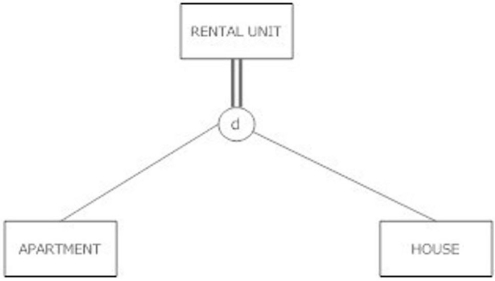


Unlock Deck
Unlock for access to all 102 flashcards in this deck.
Unlock Deck
k this deck
63
In the figure shown below, a rental unit can be both a house and an apartment. 


Unlock Deck
Unlock for access to all 102 flashcards in this deck.
Unlock Deck
k this deck
64
In the figure shown below, a rental unit can be both an apartment and a house but must be at least one. 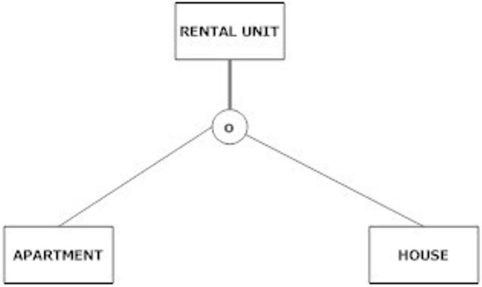


Unlock Deck
Unlock for access to all 102 flashcards in this deck.
Unlock Deck
k this deck
65
An entity cluster can have a relationship with another entity cluster much the same way that an entity can have a relationship with another entity.

Unlock Deck
Unlock for access to all 102 flashcards in this deck.
Unlock Deck
k this deck
66
Subtypes at the lowest level of a hierarchy do not inherit attributes from their ancestors.

Unlock Deck
Unlock for access to all 102 flashcards in this deck.
Unlock Deck
k this deck
67
An entity cluster should focus on some area of interest to some community of users, developers, or managers.

Unlock Deck
Unlock for access to all 102 flashcards in this deck.
Unlock Deck
k this deck
68
In the figure shown below, there could be an instance of a rental unit that is neither an apartment nor a house. 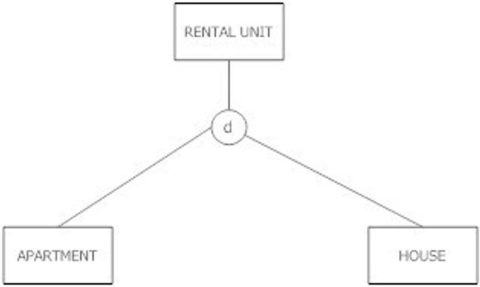


Unlock Deck
Unlock for access to all 102 flashcards in this deck.
Unlock Deck
k this deck
69
In a supertype/subtype hierarchy, attributes are assigned at the highest logical level that is possible in the hierarchy.

Unlock Deck
Unlock for access to all 102 flashcards in this deck.
Unlock Deck
k this deck
70
A subtype can become a supertype if the subtype has other subtypes beneath it.

Unlock Deck
Unlock for access to all 102 flashcards in this deck.
Unlock Deck
k this deck
71
Packaged data models are meant to be customized.

Unlock Deck
Unlock for access to all 102 flashcards in this deck.
Unlock Deck
k this deck
72
Packaged data models cause projects to take more time to build.

Unlock Deck
Unlock for access to all 102 flashcards in this deck.
Unlock Deck
k this deck
73
The following figure is an example of the overlap rule. 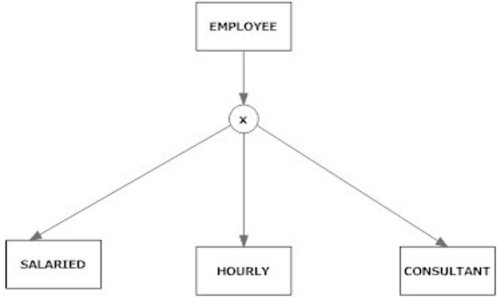


Unlock Deck
Unlock for access to all 102 flashcards in this deck.
Unlock Deck
k this deck
74
There are three separate discriminators in the following diagram because of the overlap rule. 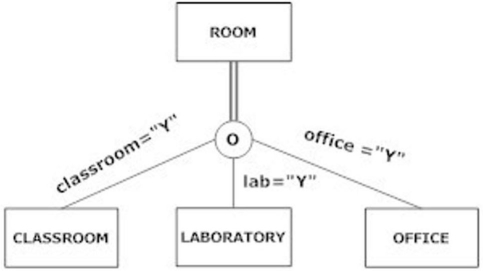


Unlock Deck
Unlock for access to all 102 flashcards in this deck.
Unlock Deck
k this deck
75
Packaged data models use an entity type to store union data.

Unlock Deck
Unlock for access to all 102 flashcards in this deck.
Unlock Deck
k this deck
76
When subtypes are overlapping, an additional field must be added to the supertype to act as a discriminator.

Unlock Deck
Unlock for access to all 102 flashcards in this deck.
Unlock Deck
k this deck
77
The following diagram is an example of a supertype/subtype hierarchy. 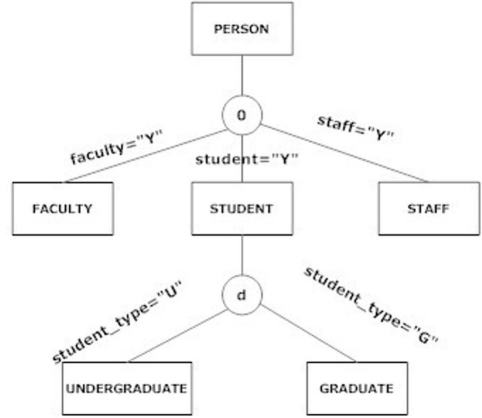


Unlock Deck
Unlock for access to all 102 flashcards in this deck.
Unlock Deck
k this deck
78
A universal data model is a generic or template data model that can be reused as a starting point for a data modeling project.

Unlock Deck
Unlock for access to all 102 flashcards in this deck.
Unlock Deck
k this deck
79
Regardless of the business situation, a member of the supertype is always a member of more than one subtype.

Unlock Deck
Unlock for access to all 102 flashcards in this deck.
Unlock Deck
k this deck
80
Packaged data models can be developed using proven components.

Unlock Deck
Unlock for access to all 102 flashcards in this deck.
Unlock Deck
k this deck



